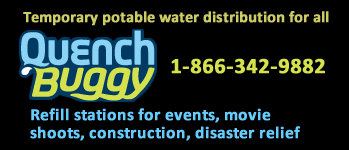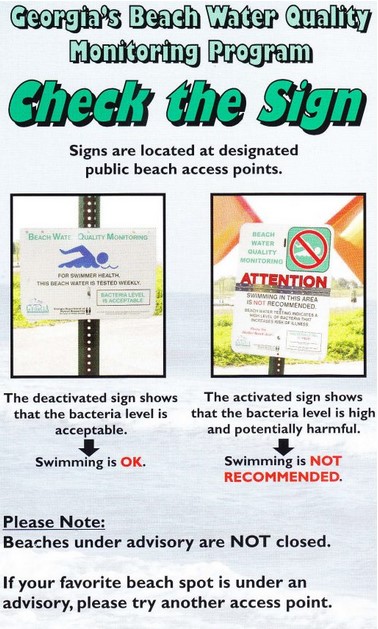Boiling water does not remove toxins and can concentrate the toxin.
Fish and shellfish:
Be aware of advisories and health risks related to eating contaminated fish and shellfish
Avoid eating very large reef fish such as grouper or amberjack, especially the head, gut, liver, or eggs. Large reef fish may be contaminated with ciguatoxin, the algal toxin that causes ciguatera fish poisoning
See the U.S. Food and Drug Administration’s (FDA) Fish and Fishery Products Hazards and Controls Guidance for more information on reef fish associated with unsafe levels of toxins.
Check for and follow local shellfish and fish advisories before eating any fish or shellfish you collect yourself. Algal and cyanobacterial toxins in fish or shellfish have no taste or odor. Cooking or preserving food does not remove toxins. Thus, you cannot tell if the seafood is safe by just looking at, smelling, or tasting it.
Check to see if shellfish beds are closed. State shellfish control authorities -- usually state health departments or other state agencies -- are required to control for toxins where harmful algal blooms are likely to occur and toxins could build up in shellfish. Common ways state authorities control for algal toxins include routine monitoring for toxic algae or shellfish and testing shellfish for toxins before or after harvesting. If levels of toxins are unsafe, state authorities will close the area for shellfish harvesting until shellfish are safe to eat.
Check safety advisories from the Environmental Protection Agency’s (EPA) Fish and Shellfish Advisories and Safe Eating Guidelines website.
Report any concerns to your local public health authorities.
EPA notice to the public on harmful algae
Harmful algal blooms can be green, blue, red or brown. They can be scummy or look like paint on the surface of the water.
What are harmful algal blooms?
Harmful algal blooms are overgrowths of algae in water. Some produce dangerous toxins in fresh or marine water but even nontoxic blooms hurt the environment and local economies.
What are the effects of harmful algal blooms?
Harmful algal blooms can:
- Produce extremely dangerous toxins that can sicken or kill people and animals
- Create dead zones in the water
- Raise treatment costs for drinking water
- Hurt industries that depend on clean water
The EPA has a role in enforcing environmental protection regulations to limit discharges into water bodies that contribute to the growth of harmful algal blooms.
The EPA also maintains list of Impaired Water Bodies by state, those water bodies that are not supporting their ideal uses for recreation, including swimming, fishing and wading. The EPA works with state authorities to identify water bodies that are not supporting their intended recreational uses, to set daily maximum limits for contaminants and nutrient load for impaired water bodies. The EPA works with state and other federal agencies to investigate and prosecute violations of the Clean Water Act, with a role in ordering watershed plans that limit discharges to these water bodies to allow for recovery.
Follow WT Clean Water Act Crime Box to learn about the work of the EPA in historic criminal prosecutions involving illegal discharges to water bodies, or making false reports about discharges.
Check out our With the Flow report weekly to see spills, streamflows, algae blooms and drinking water advisories occurring in the same drainage area in the same time frame.
Marine Blooms - Red Tide
Q. What is red tide?
A. Red Tide is caused by microscopic algae (plant-like microorganism) called Karenia brevis or K. brevis. The organism produces a toxin that can affect the central nervous system of fish, birds, mammals and other animals.
Q: Is Red Tide, red?
A: At high concentrations (called blooms), the organisms may discolor the water – sometimes red, light or dark green, brown, or clear.
Q: Where does Red Tide occur?
A: Red tides occur worldwide. K. brevis is found almost exclusively in the Gulf of Mexico but has been found on the east coast of Florida and off the coast of North Carolina.
Q: How long does it last?
A: Red tide blooms can last days, weeks or months and can also change daily due to wind conditions. Onshore winds normally bring it near the shore and offshore winds drive it out to sea.
Q: What causes Red Tide?
A. A red tide bloom needs biology (the organisms), chemistry (natural or man-made nutrients for growth), and physics (concentrating and transport mechanisms). No single factor causes it. Tests are being conducted to see if coastal nutrients enhance or prolong blooms.
Q: Can I swim in water affected by Red Tide?
A: Most people can swim in red tide but it can cause skin irritation and burning eyes. If your skin is easily irritated, avoid red tide water. If you experience irritation, get out and thoroughly wash off with fresh water. Swimming near dead fish is not recommended.
Q: What are the symptoms I may experience after contact with Red Tide?
A: Symptoms from breathing red tide toxins are normally coughing, sneezing and teary eyes. These are usually temporary when red tide toxins are in the air. Wearing a particle filter mask may lessen the affects, and using over-the-counter antihistamines may decrease your symptoms. Check the marine forecast. Fewer toxins are in the air when the wind is blowing offshore.
Q: Are there people who are more sensitive to the toxins?
A: People with respiratory problems (like asthma or bronchitis) should avoid red tide areas, especially when winds are blowing toxins onto the shore. If you go to the beach, take your short acting inhaler with you. If you have symptoms, leave the beach and seek air conditioning.
Q: Who do I call if I think I have become sick from Red Tide?
A: Please consult with your primary care physician and contact the Coastal Health District at 912-262-2342.
Q: Can I eat seafood at restaurants during a Red Tide?
A: Commercial seafood found in restaurants and grocery stores is safe because it comes from red tide free water and is monitored by the government for safety.
Q: Can I eat seafood from recreational harvesting during a Red Tide?
A: Recreational fisherman must be careful:
Do not eat mollusks -- clams or oysters-- taken from red tide waters, as they contain toxins that cause a food poisoning called NSP --Neurotoxic Shellfish Poisoning.
Finfish caught live and healthy can be eaten if filleted.
Use common sense! Harvesting distressed or dead animals is not advised under any circumstances.
Edible parts of other animals commonly called shellfish -- crabs, shrimp and lobsters -- are not affected by the red tide organisms and can be eaten.
Do not eat the tamale -- the green stuff, hepatopancreas.





